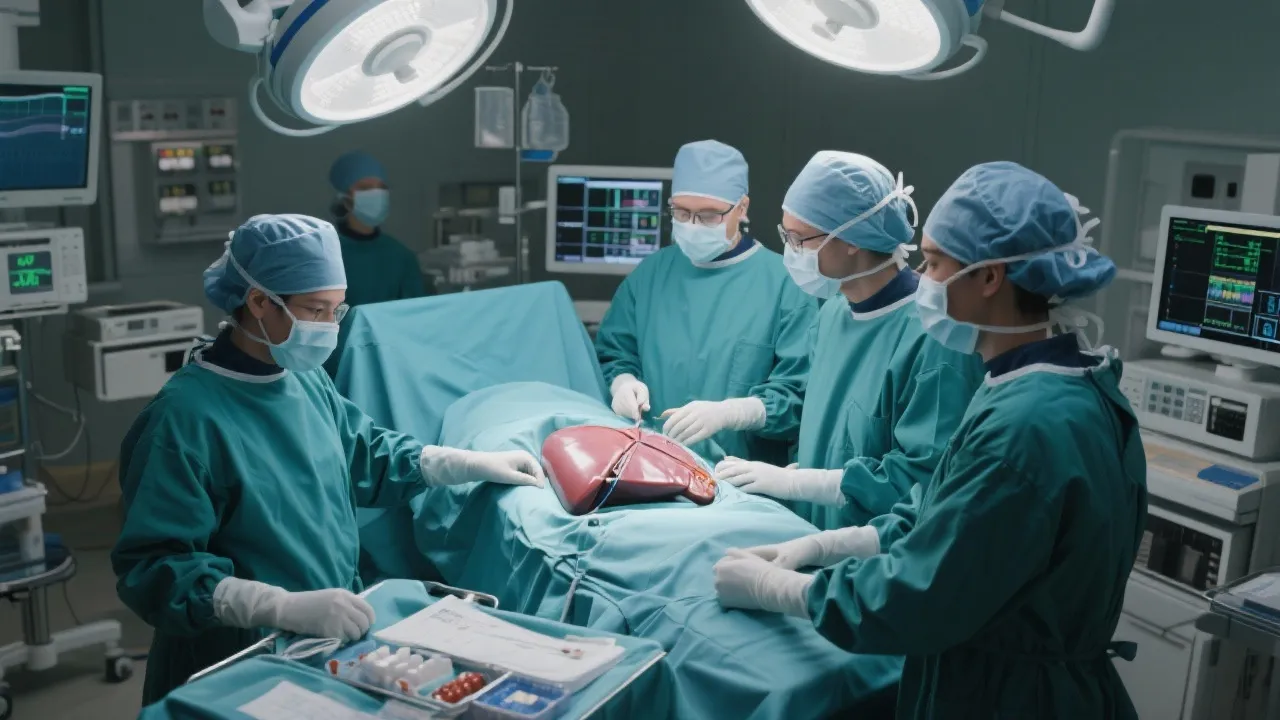Liver transplantation is a critical procedure for patients suffering from severe liver disease, including those caused by Non-Alcoholic Steatohepatitis (NASH). As a prevalent cause of liver failure, NASH requires a detailed understanding of transplantation processes, outcomes, and advancements in medical technology improving patient prognosis. This article dives into the nuances of liver transplantation, focusing on the challenges and innovations related to NASH.

Liver transplantation is a life-saving procedure for patients with end-stage liver disease (ESLD), including conditions like Non-Alcoholic Steatohepatitis (NASH). NASH, a severe form of non-alcoholic fatty liver disease, is emerging as a leading cause of liver transplants due to its increasing prevalence. Effective management and timely transplantation can significantly enhance survival and quality of life for those affected by this chronic condition. The liver, a vital organ, is responsible for numerous functions including detoxification, protein synthesis, and the production of biochemicals necessary for digestion. Damage to the liver from NASH can severely disrupt these functions leading to life-threatening complications.
NASH has become one of the primary reasons for liver transplants, alongside alcohol-induced liver disease and hepatitis C. Characterized by inflammation and liver cell damage, NASH often progresses to cirrhosis and liver failure. The obesity epidemic and increased incidence of metabolic syndrome are contributing factors to its rising impact on liver health. The connection between obesity and liver disease cannot be understated; as more individuals face weight-related health issues, the burden of NASH continues to expand. Obesity leads to an accumulation of fat in the liver, causing inflammation and eventually fibrosis if not managed properly. As traditional risk factors like hepatitis decline due to improved treatments, NASH's stature as a transplant-triggering condition grows in importance.
The liver transplant process begins with a thorough evaluation to determine candidacy. NASH patients undergo a series of assessments to gauge the severity of liver damage, overall health condition, and possible transplant risks. Once listed, they wait for a donor organ, with allocation based on the Model for End-Stage Liver Disease (MELD) score, prioritizing the sickest patients. The MELD score considers parameters such as creatinine, bilirubin, international normalized ratio (INR), and sodium levels to determine the urgency of a patient's need for a transplant. Thus, patients with NASH who exhibit severe liver dysfunction may be prioritized, but they must also navigate the complexities of organ availability.
While liver transplantation is a solution for ESLD patients, NASH patients face unique challenges. The metabolic syndrome often related to NASH, such as obesity and diabetes, can complicate both the surgery and post-operative recovery. For example, obese patients may experience higher risks of surgical complications, longer hospital stays, and poorer outcomes compared to those who are not obese. Strategies such as pre-surgical weight loss programs or bariatric surgery may be considered to improve surgical outcomes. Moreover, organ scarcity remains a significant hurdle, necessitating innovations in organ preservation and donor matching to improve availability. Current waiting times for liver transplants can often extend into years, further complicating the landscape for NASH patients.
Advancements in medical technology and techniques are enhancing outcomes for liver transplant recipients. For NASH, targeted therapies and lifestyle interventions pre- and post-transplant play crucial roles in improving patient prognosis. This includes tailored nutritional plans that aim at weight reduction and managing comorbid conditions such as diabetes and hypertension. Additionally, research into alternative treatments like regenerative medicine and artificial liver development offers hope for lessening the burden on the transplant system. Studies investigating stem cell therapies or bioengineered liver tissues are underway, potentially creating solutions for those who may not be candidates for transplant surgeries.
| Center Name | Annual Transplant Volume | Success Rate |
|---|---|---|
| Keck Hospital of USC | 150-200 | 90% |
| Mayo Clinic in Rochester | 200+ | 95% |
| Cleveland Clinic | 300+ | 93% |
| Johns Hopkins Hospital | 180+ | 92% |
| Washington University in St. Louis | 120-150 | 88% |
In conclusion, liver transplantation offers a critical lifeline for patients grappling with severe NASH-induced liver failure. As medical innovations continue to evolve this field, prospects for those affected by NASH are likely to improve further. By understanding the complexities of this disease and the transplantation process, both patients and healthcare providers can work collaboratively towards successful outcomes, thus enhancing the field of hepatology and transplantation practices significantly. The continuous exploration of new treatments, better management strategies, and the development of advanced healthcare solutions will surely redefine the future for individuals suffering from this increasingly prevalent liver condition. The combination of educating patients about lifestyle modifications, enhancing organizational efficiency regarding transplant processes, and harnessing cutting-edge research will forge pathways toward improved care and life quality for NASH patients.
Explore the Tranquil Bliss of Idyllic Rural Retreats

Ultimate Countdown: The 20 Very Legendary Gaming Consoles Ever!

Affordable Full Mouth Dental Implants Near You

Discovering Springdale Estates

Embark on Effortless Adventures: Unveiling the Top in Adventures Made Easy Outdoor Equipment

Unlock the Full Potential of Your RAM 1500: Master the Art of Efficient Towing!

Dodge Ram: Redefining the Future of Full-Size Trucks with Unmatched Power and Innovation

Get New Phones Without Plans Easily

Smart Strategies to Slash Costs on Your Roof Replacement Endeavor
